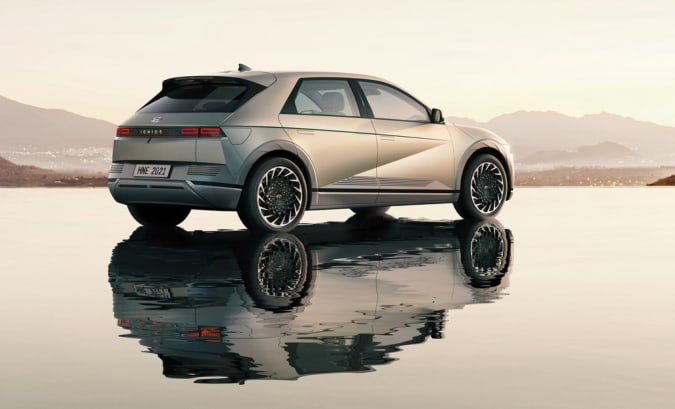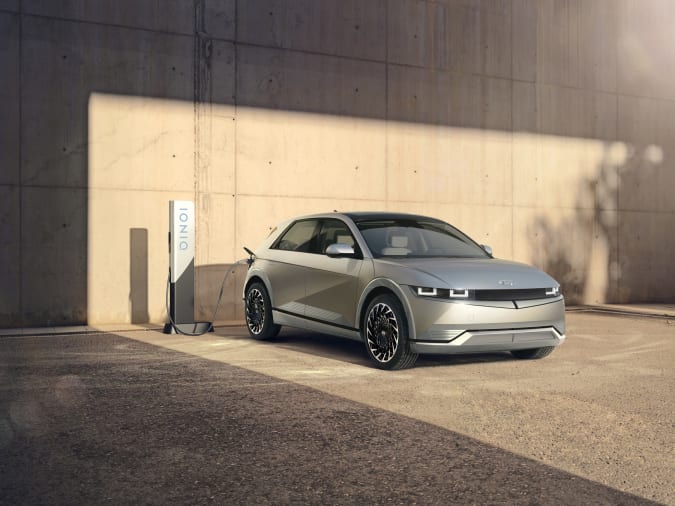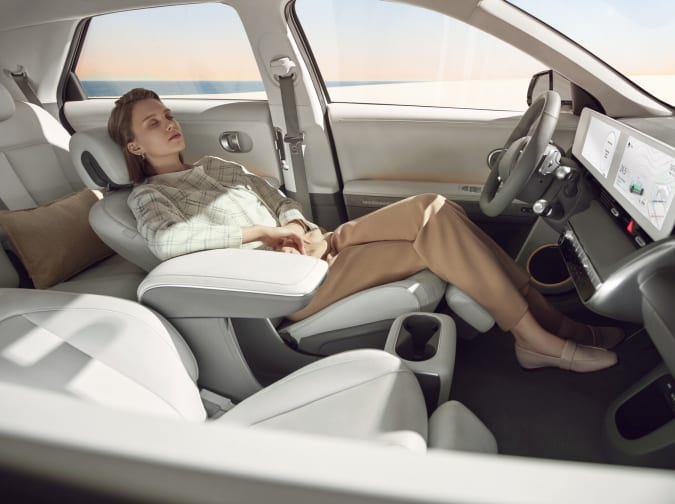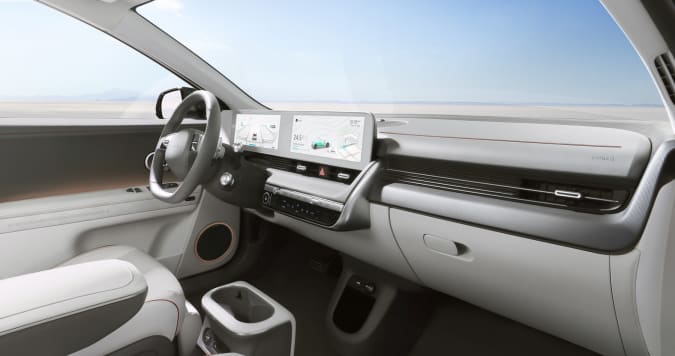[ad_1]
When I first saw Hyundai’s 45 at the Frankfurt Motor Show back in 2019, I described it as a “pure one-off concept vehicle.” I’m now prepared to eat those words, as Hyundai has unveiled the striking Ioniq 5 production EV crossover that’s closely based on the 45, right down to the diagonal crease across the doors. It has a lot going for it under the sheet metal too, with an 800 volt electric drive system that should deliver excellent range and decent performance.
The Ioniq 5 is built on Hyundai’s new Electric-Global Modular Platform, with drive- and steer-by-wire tech and a flat battery floor. Much like other recent EV platforms, that allowed it to maximize interior space while keeping the external dimensions reasonably compact. It will also come with an optional solar roof that can directly charge the main battery.

Hyundai
There are a number of configurations determined by battery size, two- or four-wheel drive and power. The Standard Range 2WD model starts with a 58-kilowatt-hour battery pack and 160-kilowatt (218 horsepower and 258 pound-feet of torque) motor, delivering a 0-60 MPH time of around 8.5 seconds. The Standard Range AWD adds a second electric motor, boosting output to 235 horsepower and 446 pound-feet of torque.
For the long-range options, a 77.4-kWh battery will be offered in the US, with a smaller 72.6-kWh pack elsewhere around the world. Those will be available with the aforementioned 160-kilowatt rear motor, delivering about 300 miles per charge in Europe’s WLTP cycle with the smaller battery (likely less in the US based on EPA standards, even with the larger battery). At the top end is the Ioniq 5 Long Range AWD with 306 horsepower and 446 pound-feet of torque, powering it from 0 to 60 MPH in 5.2 seconds — at the price of a bit less range.

Hyundai
You’ll be able to charge the Ioniq 5 using DC fast-charging at up to 350 kW, which will theoretically boost the charge from 10 to 80 percent in 18 minutes, while adding 62 miles of range in just 5 minutes. It also supports bi-directional and “Vehicle-to-Load” charging, letting you charge phones, computers and even e-bikes via the car’s battery at up to 3.6 kW. That of course will drain the car’s battery, though it can regain some charge via the solar roof.
Being around the size of a Toyota RAV 4, the Ioniq 5 is bigger than it might look at first. On top of the unusual bodywork, Hyundai brought the squared off headlight and taillight treatments over from the concept, albeit in a more practical form. It has the same 20-inch wheels as the 45, though they don’t fit quite as tightly in the wheel wells. It has some additional body cladding pieces around the edges — something that Hyundai got rid of on the Kona Electric. Some markets (not the US) will get OLED screens and rear-view cameras in the place of mirrors.

Hyundai
The 45 concept was based on the idea that you’ll be able to lounge and relax while the car drives you around. The Ioniq 5 can’t do the latter, but it does come with Hyundai’s Highway Driving Assist 2, with features like lane-centering assist, lane-change assist and nav-based adaptive cruise control. It also comes with the Remote Smart Parking Assist, letting you jump out of the car and have it park itself via smartphone.
The interior is of course completely changed from the concept, as the 45’s modernist style wouldn’t cut it in a real world with safety rules. Still, there are some interesting touches. The front seats actually recline and even have a foot rest, while the center console can slide back by 5.5 inches. That can open up more floor space while giving the rear seat occupants access to it as a sort of table.

Hyundai
Up front, the dashboard features a flat, 12-inch digital instrument cluster, along with a 12-inch touchscreen infotaintment display powered by Hyundai’s BlueLink connected surfaces. It’s also the first model with Hyundai’s augmented reality head-up display, which can transform your front windshield into a screen.
Hyundai’s Ioniq 5 will come to some regions in the first half of 2021, but it won’t hit North America until the fall. Pricing has yet to be announced, but we should get that information as launch time approaches.
[ad_2]
Source link